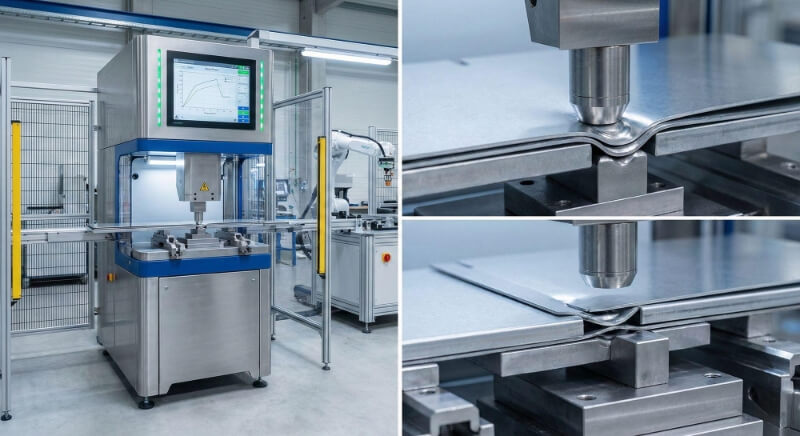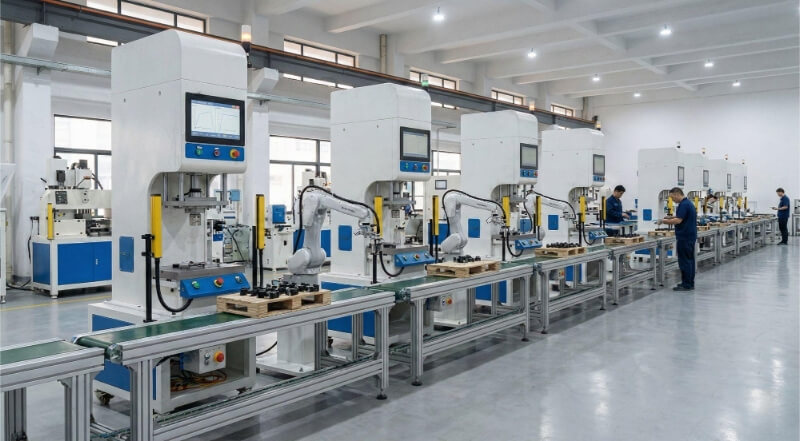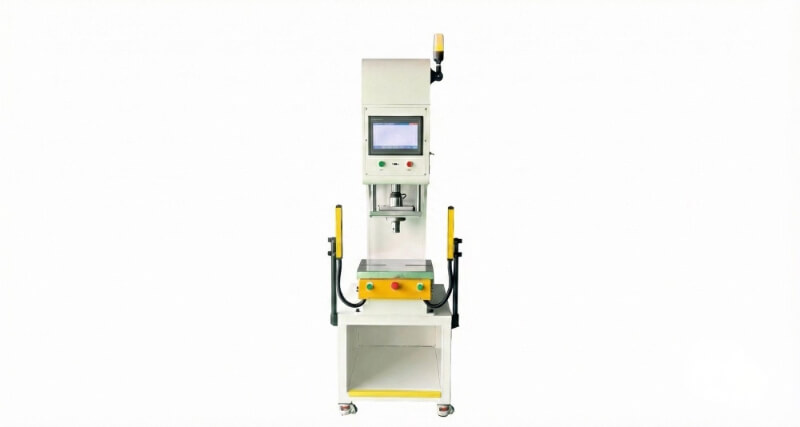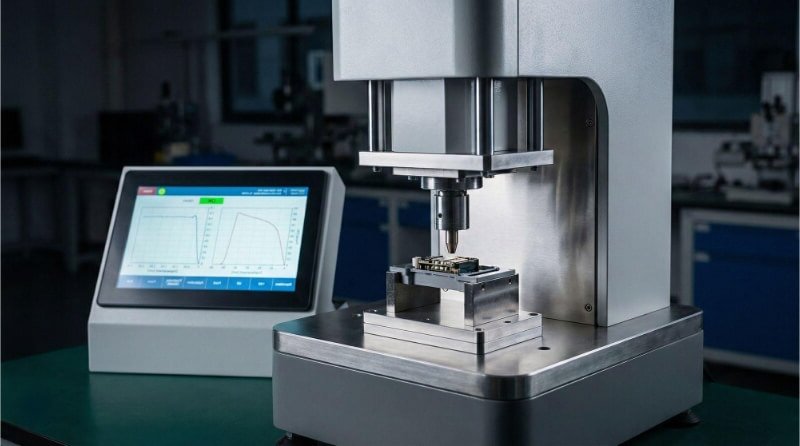Wielu inżynierów i nabywców ma trudności z wyborem odpowiedniego aluminium do swoich projektów. Często mają oni wątpliwości co do różnych typów, gatunków i ich rzeczywistych zalet. Wybór niewłaściwego może prowadzić do problemów z wydajnością lub dodatkowych kosztów. Ten post wyjaśni tę kwestię. Zobaczysz, jak poszczególne rodzaje aluminium sprawdzają się w rzeczywistych zastosowaniach. Poznasz również mocne strony każdego gatunku, abyś mógł wybrać to, co najlepiej odpowiada Twoim potrzebom.
Aluminium to najlepszy wybór dla wielu branż. Jest lekkie, wytrzymałe i łatwe w kształtowaniu. Przyjrzyjmy się głównym rodzajom, ich zastosowaniom i temu, co wyróżnia każdy gatunek.

Czym jest aluminium?
Aluminium to metal o srebrnym kolorze. Jest miękkie, lekkie i ma dobrą odporność na korozję. Czyste aluminium jest rzadko używane do produkcji części. Jest zbyt słabe do większości zadań związanych z przenoszeniem obciążeń. Doskonale sprawdza się jednak w przewodach elektrycznych i sprzęcie chemicznym, ponieważ jest odporne na korozję i dobrze przewodzi prąd.
Aby poprawić wytrzymałość aluminium i inne cechy, dodaje się niewielkie ilości innych metali. Zmienia to właściwości materiału. Dzięki temu aluminium może być mocniejsze, twardsze lub lepiej radzić sobie z wysoką temperaturą.
- Miedź (Cu): Zwiększa wytrzymałość i twardość. Sprawia, że stop jest mniej odporny na korozję.
- Magnez (Mg): Zwiększa wytrzymałość i odporność na korozję. Nadaje się do części morskich.
- Krzem (Si): Obniża temperaturę topnienia. Pomaga poprawić odporność na zużycie. Często stosowany w odlewnictwie.
- Cynk (Zn): Zwiększa wytrzymałość, ale zmniejsza odporność na korozję. Często stosowany w przemyśle lotniczym.
- Mangan (Mn): Odporny na korozję i zużycie. Często stosowany w elementach konstrukcyjnych.
Różne kombinacje dają różne wyniki. Dlatego też aluminium występuje w wielu gatunkach o unikalnych właściwościach.
Podstawowe rodzaje aluminium i ich klasyfikacje
Stopy aluminium dzielą się na dwie główne kategorie. Grupy te opierają się na sposobie formowania metalu - poprzez obróbkę mechaniczną lub odlewanie. Każdy typ ma swój własny zestaw mocnych stron i najlepszych zastosowań.
Kute stopy aluminium
Stopy kute są kształtowane przez walcowanie, wytłaczanie, Lub kucie. Stopy te są stosowane, gdy potrzebne są mocne i precyzyjne części. Są one podzielone na grupy poddające się obróbce cieplnej i niepoddające się obróbce cieplnej.
- Stopy do obróbki cieplnej (takie jak serie 2xxx, 6xxx, 7xxx) zyskują wytrzymałość dzięki procesom cieplnym.
- Stopy niepoddające się obróbce cieplnej (takie jak serie 1xxx, 3xxx, 5xxx) uzyskują wytrzymałość dzięki obróbce na zimno.
Typowe zastosowania obejmują części konstrukcyjne, rury, ramyoraz panele. Oferują one lepszą wytrzymałość i wykończenie powierzchni niż stopy odlewnicze.
Odlewane stopy aluminium
Stopy odlewnicze są wytwarzane poprzez topienie aluminium i wlewanie go do form. Są one wykorzystywane do produkcji części o skomplikowanych kształtach. Odlewanie aluminium jest często bardziej opłacalne w przypadku produkcji wielkoseryjnej.
Ich wiodący pierwiastek stopowy grupuje je:
- Na bazie krzemu (np. A356): Dobry do ogólnego odlewania. Zapewnia wytrzymałość i odporność na korozję.
- Na bazie miedzi: Większa wytrzymałość, ale mniejsza odporność na korozję.
- Na bazie magnezu: Używany do twardych, odpornych na korozję części.
Typowe zastosowania obejmują bloki silnika, obudowy i armaturę. Nie są one tak wytrzymałe jak stopy kute, ale są łatwiejsze i tańsze w produkcji złożonych kształtów.
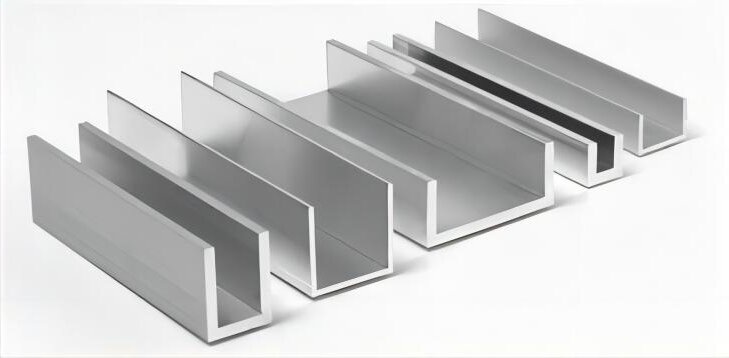
Zrozumienie serii aluminium według gatunku
Czterocyfrowy system liczbowy grupuje stopy aluminium. Pierwsza cyfra wskazuje podstawowy pierwiastek stopowy. Każda seria ma unikalne cechy. Niektóre są wytrzymałe. Inne są odporne na korozję. Przyjrzyjmy się podstawowym seriom i ich zaletom.
Seria 1xxx: Czyste aluminium
Ta seria to co najmniej 99% czystego aluminium. Charakteryzuje się doskonałą odpornością na korozję i przewodnością elektryczną. Ma jednak niską wytrzymałość. Jest stosowany w przewodnikach elektrycznych, urządzeniach do przetwarzania żywności i zbiornikach chemicznych. Jest łatwy do formularz I spawaćale nie nadaje się do zastosowań, w których występują duże obciążenia.
Seria 2xxx: Stopy miedzi
W tej grupie głównym pierwiastkiem jest miedź. Stopy te są wydajne i często wykorzystywane w przemyśle lotniczym i motoryzacyjnym. Mają one jednak słabą odporność na korozję. Zwykle wymagają powłoki lub obróbka powierzchni. Nie jest łatwy do spawania, ale zapewnia wysoką wydajność pod obciążeniem.
Seria 3xxx: Stopy manganu
Seria 3xxx zawiera dodatek manganu w celu zwiększenia wytrzymałości i odporności na korozję. Stopy te nie wymagają obróbki cieplnej. Są łatwe do formowania i spawania. Typowe zastosowania obejmują naczynia kuchenne, pokrycia dachowe, siding i zbiorniki magazynowe. Równoważą one dobrą formowalność z przyzwoitą wytrzymałością.
Seria 4xxx: Stopy krzemu
Krzem obniża temperaturę topnienia aluminium. Stopy z tej grupy są często stosowane w drutach spawalniczych i częściach silników samochodowych. Charakteryzują się one dobrą odpornością na zużycie i umiarkowaną wytrzymałością. Niektóre gatunki są stosowane w wymiennikach ciepła. Oferują one również ciemniejszy kolor do anodowania.
Seria 5xxx: Stopy magnezu
Stopy te wykorzystują magnez jako główny dodatek. Oferują one wysoką wytrzymałość i doskonałą odporność na korozję, zwłaszcza w środowisku morskim. Nie nadają się do obróbki cieplnej, ale dobrze reagują na obróbkę na zimno. Typowe zastosowania obejmują budowę statków, zbiorników ciśnieniowych i paneli pojazdów. Są łatwe do spawania i mają dobrą odporność na zmęczenie.
Seria 6xxx: Stopy magnezu i krzemu
Ta seria łączy w sobie magnez i krzem. Oferuje dobre połączenie wytrzymałości, odporności na korozję i obrabialności. Stopy te nadają się do obróbki cieplnej i są łatwe w obróbce i spawaniu. Stosowane są w elementach konstrukcyjnych, mostach, rurociągach i ramach pojazdów. Jednym z popularnych gatunków jest 6061, znany ze swojej wszechstronnej wydajności.
Seria 7xxx: Stopy cynku
Głównym pierwiastkiem jest tu cynk. Stopy te są wydajne i często stosowane w przemyśle lotniczym, sprzęcie sportowym i częściach narażonych na duże obciążenia. Niektóre gatunki zawierają także magnez lub miedź. Są one odporne na obróbkę cieplną, ale niełatwe do spawania. Odporność na korozję jest różna, więc często dodaje się powłoki.
Seria 8xxx: Inne elementy
Seria ta obejmuje stopy z unikalnymi pierwiastkami, takimi jak lit czy żelazo. Służą one do specjalnych zastosowań, takich jak pakowanie żywności (folia aluminiowa), kable zasilające lub części lotnicze. Stopy te nie są standardem do ogólnego użytku, ale pełnią istotną rolę w określonych branżach.
| Seria aluminiowa | Główny element stopowy | Kluczowe właściwości | Typowe zastosowania |
|---|---|---|---|
| 1xxx | Brak (czyste aluminium) | Doskonała odporność na korozję, bardzo miękka | Przewodniki elektryczne, opakowania do żywności, folia |
| 2xxx | Miedź | Bardzo mocna, niska odporność na korozję | Konstrukcje lotnicze, części lotnicze i kosmiczne |
| 3xxx | Mangan | Dobra odporność na korozję, łatwe formowanie | Pokrycia dachowe, naczynia kuchenne, zbiorniki magazynowe |
| 4xxx | Krzem | Odporność na zużycie, stabilność termiczna | Części samochodowe, drut spawalniczy |
| 5xxx | Magnez | Wysoka wytrzymałość, odporność na korozję klasy morskiej | Przemysł stoczniowy, cysterny, nadwozia ciężarówek |
| 6xxx | Magnez + krzem | Średnia wytrzymałość, dobra spawalność | Ramy konstrukcyjne, obudowy, części maszyn |
| 7xxx | Cynk | Najwyższa wytrzymałość, mniej podatny na formowanie | Ramy aerodynamiczne, wyczynowe części rowerowe |
| 8xxx | Inne pierwiastki (np. żelazo, lit) | Specjalne właściwości (lekkość, wytrzymałość, elastyczność) | Folia, folia akumulatorowa, opakowania, kable |
Oznaczenia temperatury i ich znaczenie
Oznaczenia temperatur pokazują, w jaki sposób stop aluminium został przetworzony po formowaniu. Obróbka ta wpływa na wytrzymałość, elastyczność i twardość. Znajomość temperamentu pomaga wybrać odpowiedni gatunek do danego zastosowania.
Wyżarzony (O Temper)
O temperamencie oznacza, że materiał jest w pełni wyżarzony. Został on podgrzany do określonej temperatury, a następnie powoli schłodzony. Proces ten usuwa wewnętrzne naprężenia, zmiękcza metal i poprawia plastyczność.
- Wytrzymałość na rozciąganie: Około 10-20 ksi (70-140 MPa), w zależności od stopu
- Wytrzymałość na rozciąganie: Często mniej niż 5 ksi (35 MPa)
- Wydłużenie: Może przekraczać 30%, dzięki czemu idealnie nadaje się do głębokiego tłoczenia i złożonego gięcia
Najlepsze zastosowanie: Części, które muszą być poddawane ciężkiemu formowaniu bez pękania, takie jak zbiorniki chemiczne, naczynia kuchenne i reflektory oświetleniowe.
Hartowane naprężeniowo (H Temper)
H temperament dotyczy stopów niepoddawanych obróbce cieplnej (takich jak serie 1xxx, 3xxx i 5xxx). Stop jest wzmacniany poprzez obróbkę na zimno, taką jak walcowanie lub rozciąganie. Zwiększa to wytrzymałość, ale zmniejsza plastyczność. Druga i trzecia cyfra po "H" wskazują poziom utwardzania odkształceniowego i częściowe wyżarzanie.
Na przykład:
- H14: Hartowane do półtwardości
- H18: Hartowane do pełnej twardości
Typowa wytrzymałość dla 3003-H14:
- Wytrzymałość na rozciąganie: ~22 ksi (150 MPa)
- Wytrzymałość na rozciąganie: ~21 ksi (145 MPa)
- Wydłużenie: ~5-10%
Najlepsze zastosowanie: Pokrycia dachowe, siding, rynny deszczowe, zbiorniki magazynowe - zastosowania wymagające umiarkowanej wytrzymałości i dobrej odporności na korozję.
Obróbka cieplna (T Temper)
T temperament jest przeznaczony do stopów poddawanych obróbce cieplnej (takich jak serie 2xxx, 6xxx i 7xxx). Metal jest podgrzewany do wysokiej temperatury, utrzymywany przez określony czas, a następnie hartowany i starzony. Proces ten znacznie zwiększa wytrzymałość.
Typowe temperamenty obejmują:
- T4: Obrobione cieplnie i naturalnie postarzone
- T6: Poddane obróbce cieplnej i sztucznemu starzeniu w celu uzyskania maksymalnej wytrzymałości
Przykład: 6061-T6
- Wytrzymałość na rozciąganie: ~45 ksi (310 MPa)
- Wytrzymałość na rozciąganie: ~40 ksi (275 MPa)
- Wydłużenie: ~10-17%, w zależności od grubości
Przykład: 7075-T6 (gatunek lotniczy)
- Wytrzymałość na rozciąganie: ~83 ksi (570 MPa)
- Wytrzymałość na rozciąganie: ~73 ksi (503 MPa)
- Wydłużenie: ~11%
Najlepsze zastosowanie: Konstrukcje lotnicze, części samochodowe, ramy rowerowe i zastosowania wymagające wysokiego stosunku wytrzymałości do masy.
Korzyści z używania aluminium
Aluminium jest wybierane w wielu branżach, ponieważ oferuje praktyczne korzyści. Korzyści te pomagają poprawić wydajność, obniżyć koszty i wspierać długotrwałe użytkowanie.
Lekki, ale wytrzymały
Aluminium waży znacznie mniej niż stal. Pomaga to zmniejszyć całkowitą wagę części bez utraty wytrzymałości. Wytrzymuje duże obciążenia w produktach takich jak ramy samolotów, panele samochodowe i obudowy maszyn. Części mogą być cieńsze bez utraty stabilności.
Odporność na korozję
Aluminium tworzy naturalną warstwę tlenku, gdy jest wystawione na działanie powietrza. Warstwa ta chroni je przed rdzą i uszkodzeniami powierzchni. Sprawia to, że jest przydatne w produktach zewnętrznych, częściach morskich i środowiskach wilgotnych. W przeciwieństwie do stali, w wielu przypadkach nie wymaga malowania ani powlekania w celu zabezpieczenia przed rdzą.
Recykling i zrównoważony rozwój
Aluminium może być wielokrotnie poddawane recyklingowi. Po ponownym użyciu nie traci swojej wytrzymałości ani jakości. Recykling aluminium pochłania znacznie mniej energii niż produkcja nowego aluminium. Zmniejsza to ślad węglowy i obniża koszty produkcji.
Przewodność cieplna i elektryczna
Aluminium dobrze przenosi ciepło i elektryczność. Dlatego też jest stosowane w radiatorach, grzejnikach i kablach zasilających. Szybko rozprowadza ciepło. Pomaga to chronić urządzenia przed przegrzaniem. W wielu systemach zasilania radzi sobie również z przepływem energii elektrycznej przy niższej wadze niż miedź.
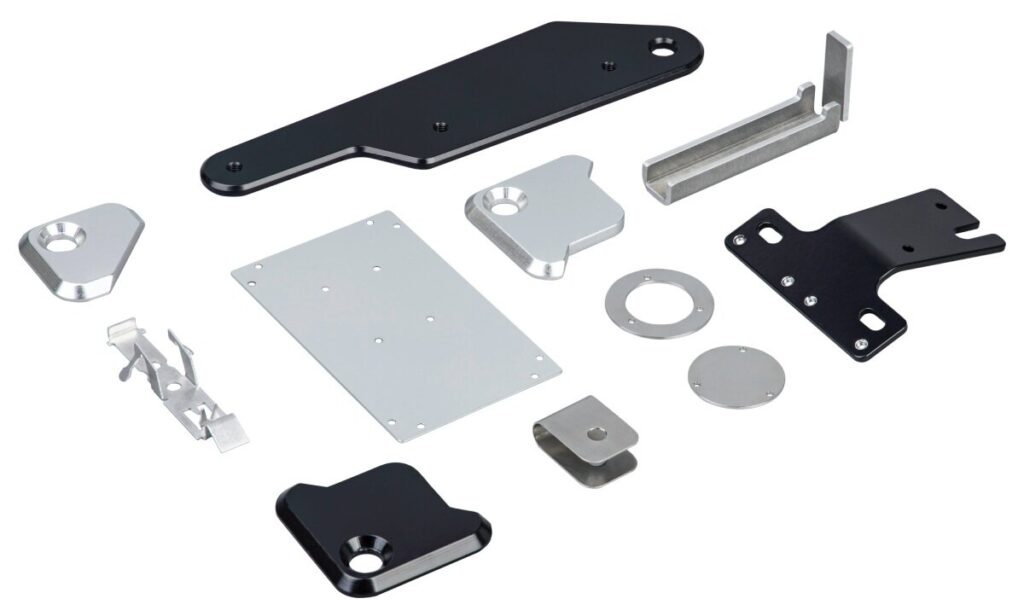
Zastosowania różnych rodzajów aluminium
Każdy rodzaj aluminium odpowiada konkretnym potrzebom. Jego niewielka waga, wytrzymałość i odporność na rdzę sprawiają, że jest ono przydatne w wielu dziedzinach.
Kosmonautyka i lotnictwo
Samoloty wymagają wytrzymałych, ale lekkich materiałów. Stopy aluminium, takie jak serie 2xxx i 7xxx, są stosowane w skrzydłach, panelach kadłuba i częściach podwozia. Stopy te są odporne na duże obciążenia i pozostają wytrzymałe przez długi czas. Pomagają również zmniejszyć wagę, co obniża zużycie paliwa.
Produkcja motoryzacyjna
W samochodach aluminium pomaga zmniejszyć wagę przy jednoczesnym zachowaniu bezpieczeństwa i wytrzymałości. Serie 5xxx i 6xxx są znane w panelach nadwozia, ramach i częściach silnika. Są one odporne na rdzę i wgniecenia. Dzięki temu samochody są lżejsze i zużywają mniej paliwa bez utraty trwałości.
Budownictwo i Architektura
Aluminium jest stosowane w ramach okiennych, ścianach osłonowych, pokryciach dachowych i panelach konstrukcyjnych. Seria 6xxx jest często wybierana ze względu na swoją wytrzymałość i dobre wykończenie. Dobrze sprawdza się w warunkach zewnętrznych. Wspiera również czyste projekty w nowoczesnych budynkach.
Opakowania i towary konsumpcyjne
Serie 1xxx i 3xxx są znane z opakowań na żywność i napoje, takich jak puszki i folia. Są miękkie, łatwe do kształtowania i bezpieczne w kontakcie z żywnością. Aluminium jest również wykorzystywane w narzędziach, meblach i sprzęcie AGD. Zapewnia czysty wygląd i jest trwałe bez większych zabiegów pielęgnacyjnych.
Elektryka i elektronika
Aluminium jest stosowane w przewodach, złączach i radiatorach. Dobrze przewodzi prąd i waży mniej niż miedź. Seria 1xxx jest używana do szyn zbiorczych i napowietrznych linii energetycznych. Seria 6xxx jest stosowana w radiatorach i obudowach.
Wybór odpowiedniego aluminium: Co ma znaczenie?
Wybór aluminium nie polega na znalezieniu "najlepszego" materiału - chodzi o znalezienie odpowiedniego dla konkretnych potrzeb. Przyjrzyjmy się, co wpływa na decyzję w rzeczywistych projektach.
Siła i wydajność
Jeśli część musi wytrzymać duże obciążenia, warto przyjrzeć się serii 6xxx do zastosowań konstrukcyjnych lub serii 7xxx w celu uzyskania maksymalnej wytrzymałości. Gdy wymagana jest precyzyjna obróbka, 6061 oferuje doskonałą obrabialność z czystymi cięciami. W przypadku części wymagających gięcia lub formowania, bardziej miękkie stopy, takie jak aluminium 1100, nie pękają pod naciskiem.
Warunki środowiskowe
Środowisko odgrywa ogromną rolę. Zastosowania morskie wymagają odporności na korozję stopów serii 5xxx. Środowiska wysokotemperaturowe mogą skłaniać do stosowania stopów serii 2xxx, choć potrzebne będą powłoki ochronne. A jeśli w grę wchodzi spawanie, warto unikać problematycznych stopów, takich jak serie 2xxx i 7xxx - 5xxx i 6xxx spawają się znacznie bardziej niezawodnie.
Budżet i kwestie praktyczne
Koszt zawsze ma znaczenie. Aluminium 3003 oferuje oszczędności w stosunku do 5052, choć z pewnymi kompromisami w zakresie wytrzymałości. Dostępność również ma znaczenie - podczas gdy 6061 jest łatwo dostępny u większości dostawców, stopy takie jak 7075 często wymagają specjalnego zamówienia. Nie należy też zapominać o wykorzystaniu materiału - projektowanie w oparciu o standardowe rozmiary magazynowe może znacznie zmniejszyć ilość odpadów i koszty.
Wnioski
Aluminium występuje w wielu rodzajach, z których każdy ma inną wytrzymałość, zastosowania i koszty. Niektóre z nich są lepsze pod względem wytrzymałości, inne pod względem gięcia lub odporności na korozję. Znajomość różnic między seriami stopów, kształtami i wykończeniami pomaga wybrać odpowiedni materiał do danego zadania.
Potrzebujesz pomocy w wyborze odpowiedniego aluminium do następnego projektu? Skontaktuj się z naszym zespołem w celu uzyskania fachowej porady i szybkiego, niezawodnego wsparcia w zakresie produkcji.
Hej, jestem Kevin Lee

Przez ostatnie 10 lat byłem zanurzony w różnych formach produkcji blach, dzieląc się tutaj fajnymi spostrzeżeniami z moich doświadczeń w różnych warsztatach.
Skontaktuj się z nami

Kevin Lee
Mam ponad dziesięcioletnie doświadczenie zawodowe w produkcji blach, specjalizując się w cięciu laserowym, gięciu, spawaniu i technikach obróbki powierzchni. Jako dyrektor techniczny w Shengen, jestem zaangażowany w rozwiązywanie złożonych wyzwań produkcyjnych i napędzanie innowacji i jakości w każdym projekcie.

